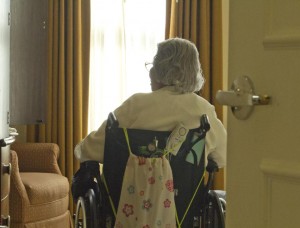I recently attended a meeting at which there were attorneys, hospital administrators, and social workers gathered to discuss Minnesota’s Health Care Directive (HCD) law, issues that arise in using HCDs, and suggestions for avoiding those issues. Included in the discussion about HCDs was the use of Provider Orders for Life-Sustaining Treatment (POLST) and Do Not Resuscitate/Do Not Intubate (DNR/DNI) orders. These documents are meant to work as a set of instruments, in particular circumstances, and they deserve some explanation and context for their use to clarify when and how to use them. They work together rather than as “either/or” choices.
- Health Care Directive (HCD)
This document is a legally recognized record of your wishes and instructions for medical care. Everyone over 18 should consider making one. It includes the appointment of an agent who, when and if you are unable to speak for yourself, is allowed to speak for you, in accordance with your wishes. It’s a straightforward, easily accessible document that can be drafted by an attorney or on your own. It requires either two witnesses or a notary public to witness your signature. There’s simply no reason not to have one of these at the ready and throughout your adult life.
WHEN DO YOU USE IT/NEED IT?
You draft a HCD in advance, hopefully well in advance of anything traumatic happening to your health. Or, you can fill one out when you are threatened by a serious illness or event. In any case, you take a copy to your doctor(s), you give them to your agent(s), and you tell anyone who cares about you where you left copies of your HCD so they are easily found and consulted. If you’re going to the hospital, you take a copy with you and give it to the intake personnel. These are invaluable documents to communicate your wishes about something that may happen in the future, maybe even many years from now.
But, be careful, they aren’t useful in all instances. When it comes to emergency treatment like 911, your HCD will likely not be of use to you. The professionals who come to your home or your facility are obligated to give you CPR unless there is a physician’s/provider’s order of some kind that instructs them not to do so. So, you need to understand the context of getting and using a physician’s order.
If you’re in relatively good health at any age with no known reason to think you wouldn’t reasonably recover from even a traumatic health event, 911 personnel are going to try to revive you/sustain vital signs by any means – and, so they should. But, if you’re terminally ill and suffering from an irreversible disease or condition which you (or your agent) and your doctor have recognized as likely your last illness, no hope of recovery, and no chance to regain your quality of life, it may be time for a POLST or DNR/DNI (see below).
- Provider Order for Life Sustaining Treatment (POLST)
This is an important document for a very particular set of people: those with advanced, irreversible illness who have made the choice to refuse artificial life-sustaining treatment and heroic measures to revive them if their heart and breathing stops on its own. This can include anyone who suffers from anything from terminal cancer to advanced dementia.
It’s important to understand that, in many cases, 911 may not be an appropriate choice in the first place (depending on the circumstances, the wishes of the person, and the orders of the doctor). But, if 911 is called, a POLST, when properly presented, is enough to instruct the emergency personnel to follow what it says. And, it can say anything from “do whatever it takes to keep me alive” to “please do nothing to revive me” and choices in between.
The difference is that the POLST form is short and to the point, easy to read and comprehend for people who need to do their jobs quickly and without hesitation, and it’s a doctor’s order – in a format they know and recognize, and with an authority to which they are trained to respond. As frustrating as it can be for people to realize that, in some cases, their HCD isn’t enough, I would encourage you to look at it as something of an assurance that information will be comprehended and adhered to. The instructions on a POLST do not require interpretation, and therefore, there is no room for misunderstanding the directions contained in it.
- Do Not Resuscitate/Do Not Intubate (DNR/DNI)
Similar to the POLST, a DNR/DNI order is a physician’s order for the same very specific group of people with advanced, irreversible illness and containing specific instructions for doing or not doing CPR (efforts to restart heart and lungs) or starting artificial means of life support (like intubation). Again, a short, concise document with easy to read instructions on a familiar form, spoken with the medical authority of a doctor and in medical language suitable for other medical personnel in an emergency situation.
In short, everyone who is over 18 years of age needs a HCD. Some people might also consider a POLST or a DNR/DNI if they have an advanced, irreversible illness, and have made the choice to refuse artificial life-sustaining treatment and CPR. This can include anyone who suffers from a terminal illness including advanced dementia. If you decide you’re in need of either a POLST or a DNR/DNI order, talk to your physician – they will help you determine if, based on your illness (or the illness of your loved one), your wishes, and your situation, you’re an appropriate candidate.
This blog is written by Bridget-Michaele Reischl, Attorney DECORO LAW OFFICE, PLLC www.decorolaw.com
